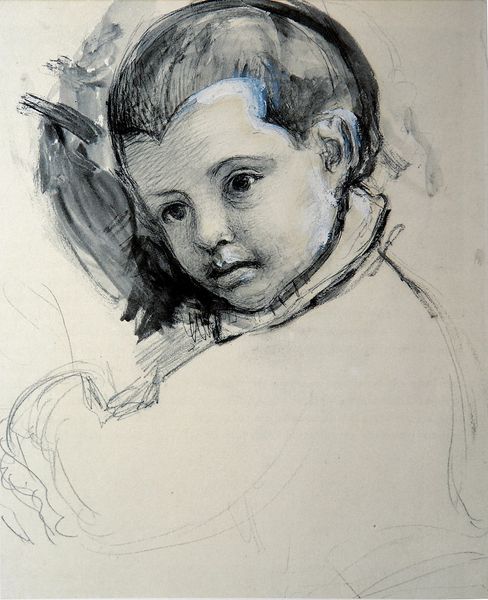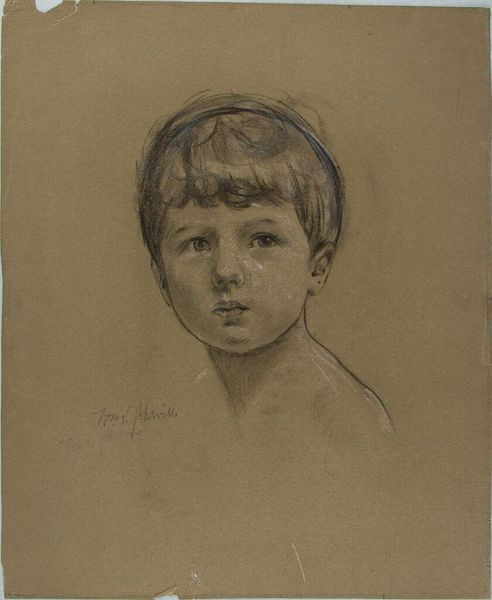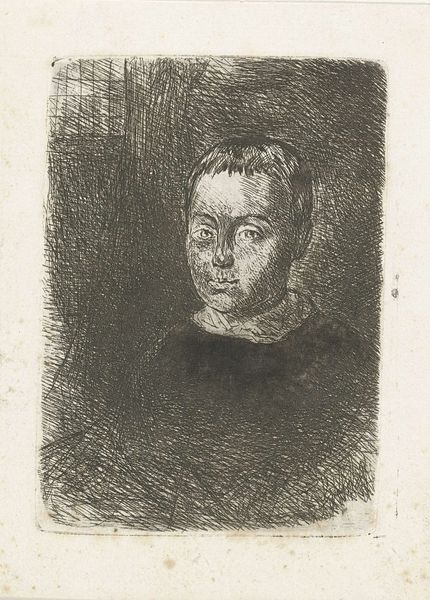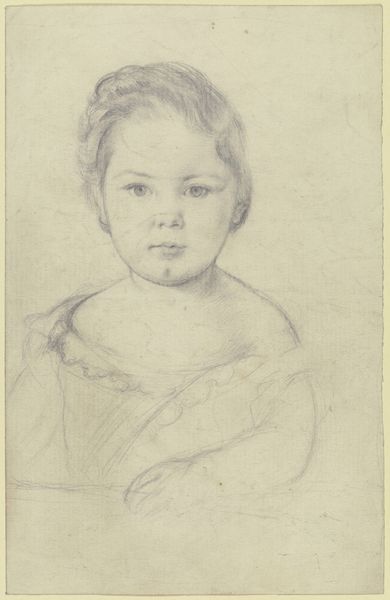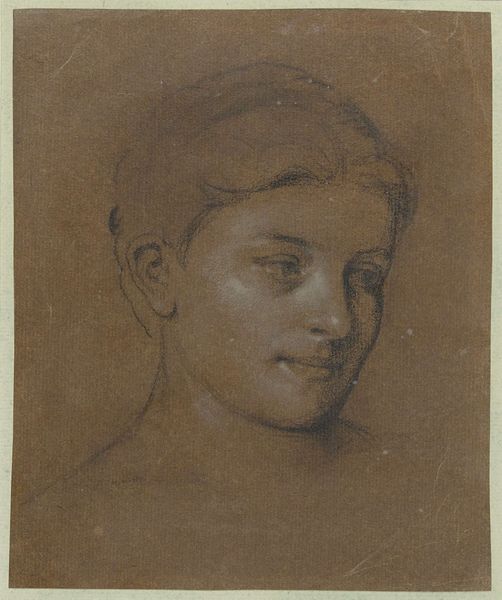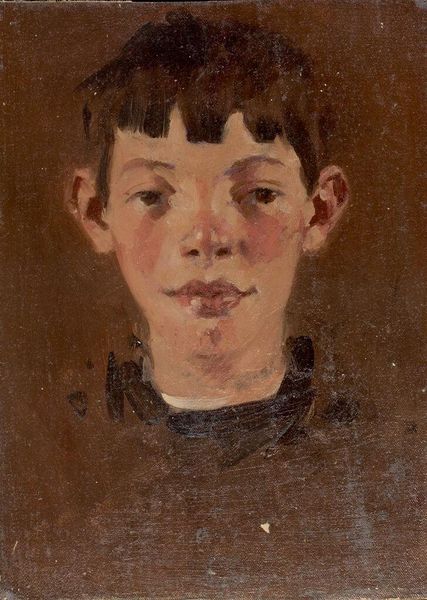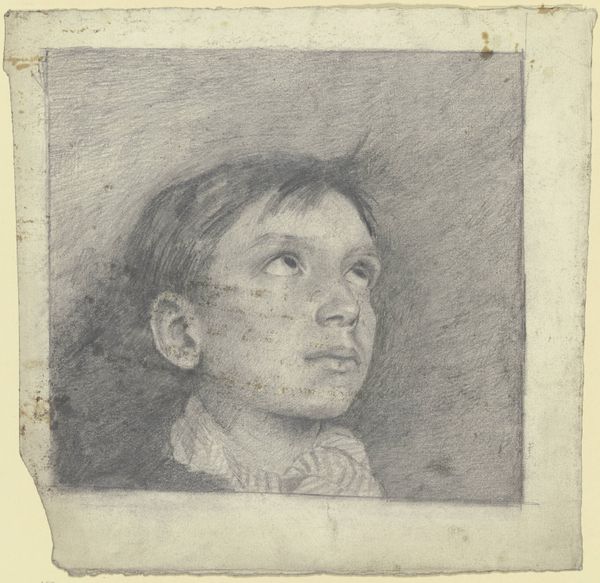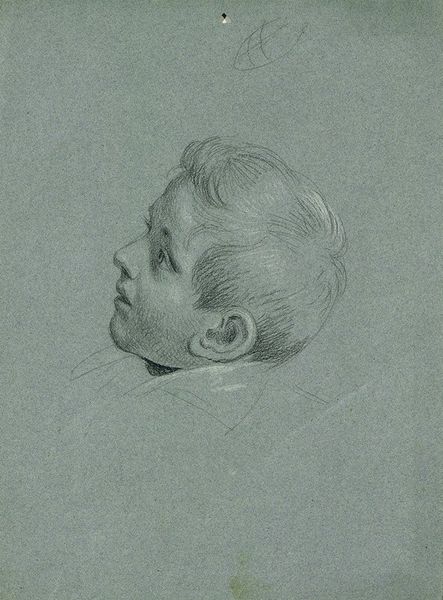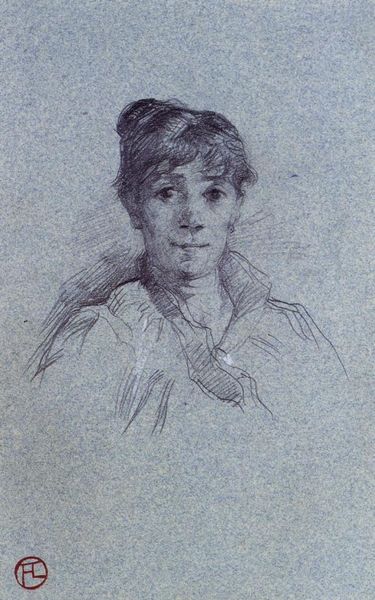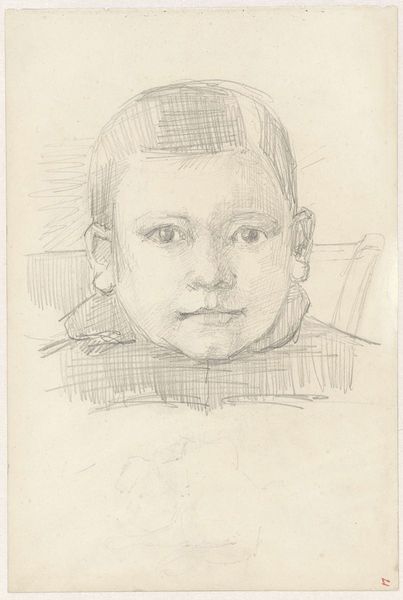
drawing, pencil
#
pencil drawn
#
drawing
#
pencil sketch
#
charcoal drawing
#
figuration
#
pencil drawing
#
pencil
#
portrait drawing
Dimensions: 25.7 x 17.9 cm
Copyright: Public domain
Editor: This is "The son Edoardo" by Noè Bordignon, created using pencil. It has a subdued and melancholic feel; a portrait capturing a fleeting moment of childhood. What social or historical context do you believe influences the tone of the piece? Curator: The incomplete nature of the drawing, especially considering Bordignon's traditional artistic training, can be interpreted as a commentary on the disrupted nature of identity, perhaps even a nod to the ever-changing social position of children during that era. Where do we draw the line between capturing reality and performing it? Editor: That's a compelling point. How does the technique used by the artist further highlight identity issues, given the time when it was created? Curator: The stark contrast between light and shadow can symbolize the duality of societal expectations and individual desires of the figure depicted in the portrait. Bordignon's choice not to fully define the lower portion of the boy’s figure speaks to the fluidity and constructedness of identity. Think about how that could be read in relation to patriarchal systems and gender. Editor: I see it now. The incomplete depiction opens up many interpretative doors and forces us to acknowledge identity and societal context. Curator: Exactly. By challenging conventional portraiture, the drawing prompts us to consider the complex forces shaping our perceptions and the realities of identity. What does it mean to be visible or invisible? Editor: This perspective adds a profound layer to the artwork; I hadn't considered it beyond the surface-level portrait. Thanks for your insight. Curator: My pleasure! Looking closely reveals so much, when you bring an understanding of history and critical theory to bear.
Comments
No comments
Be the first to comment and join the conversation on the ultimate creative platform.
